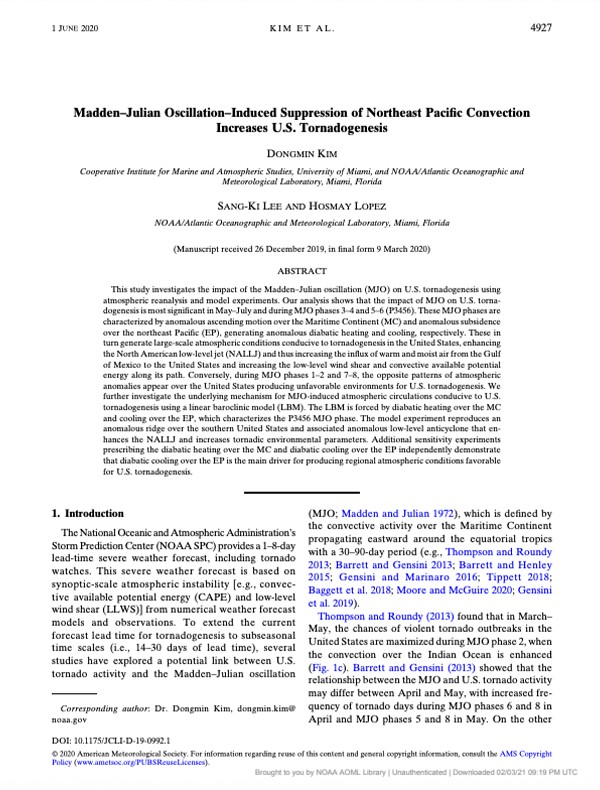Kim, D., Lee, S. K., & Lopez, H. (2020). Madden–Julian Oscillation–Induced Suppression of Northeast Pacific Convection Increases US Tornadogenesis. Journal of Climate, 33(11), 4927-4939.
Abstract
This study investigates the impact of the Madden–Julian oscillation (MJO) on U.S. tornadogenesis using atmospheric reanalysis and model experiments. Our analysis shows that the impact of MJO on U.S. tornadogenesis is most significant in May–July and during MJO phases 3–4 and 5–6 (P3456). These MJO phases are characterized by anomalous ascending motion over the Maritime Continent (MC) and anomalous subsidence over the northeast Pacific (EP), generating anomalous diabatic heating and cooling, respectively. These in turn generate large-scale atmospheric conditions conducive to tornadogenesis in the United States, enhancing the North American low-level jet (NALLJ) and thus increasing the influx of warm and moist air from the Gulf of America to the United States and increasing the low-level wind shear and convective available potential energy along its path. Conversely, during MJO phases 1–2 and 7–8, the opposite patterns of atmospheric anomalies appear over the United States producing unfavorable environments for U.S. tornadogenesis. We further investigate the underlying mechanism for MJO-induced atmospheric circulations conducive to U.S. tornadogenesis using a linear baroclinic model (LBM). The LBM is forced by diabatic heating over the MC and cooling over the EP, which characterizes the P3456 MJO phase. The model experiment reproduces an anomalous ridge over the southern United States and associated anomalous low-level anticyclone that enhances the NALLJ and increases tornadic environmental parameters. Additional sensitivity experiments prescribing the diabatic heating over the MC and diabatic cooling over the EP independently demonstrate that diabatic cooling over the EP is the main driver for producing regional atmospheric conditions favorable for U.S. tornadogenesis.
